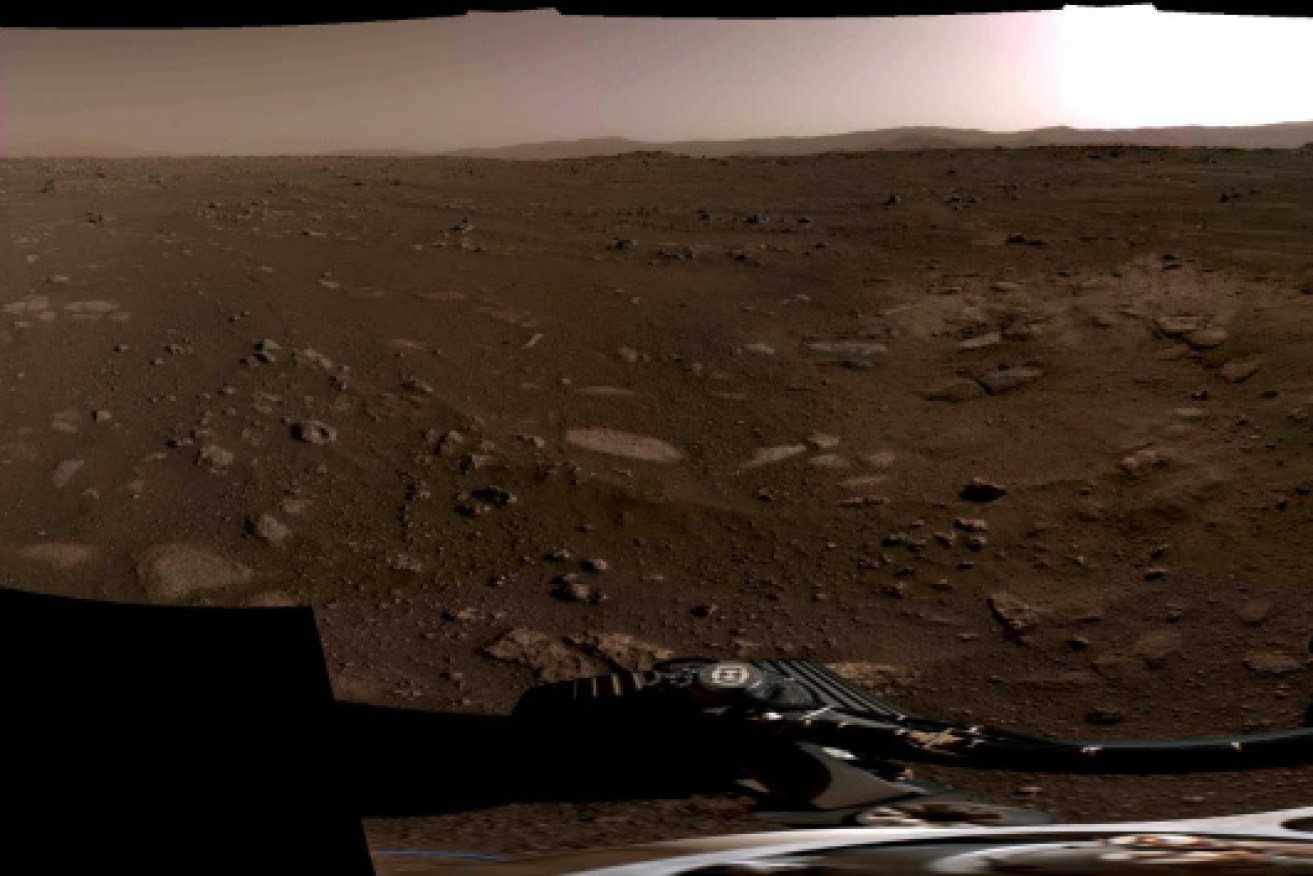NASA’s Perseverance rover sends back sounds of Martian winds and rock-blasting laser


The Perseverance rover has already sent back panoramas of Jezero Crater. Photo: NASA/JPL-Caltech/University Of Arizona
NASA has released audio recordings of Martian winds, captured by its Perseverance rover, which landed on the red planet on February 18.
The data release also includes the first audio of laser zaps on another planet — as the rover’s SuperCam instrument blasts Martian rocks to explore their composition — and the sounds of the rover as it begins its first tentative explorations.
The laser sounds can give NASA’s researchers an idea of the composition of the rock.
“This recording was made by the SuperCam instrument on NASA’s Perseverance Mars rover on February 19, 2021, just about 18 hours after landing on the mission’s first sol or Martian day,” NASA wrote on Soundcloud.
“The rover’s mast, holding the microphone, was still stowed on Perseverance’s deck, and so the sound is muffled.
“Just a little wind can be heard.
“The sounds of 30 (laser) impacts are heard, some slightly louder than others.
“Variations in the intensity of the zapping sounds will provide information on the physical structure of the targets, such as its relative hardness or the presence of weathering coatings.”
Perseverance’s landing on Mars accomplished the riskiest step yet in the mission to bring back rocks that could answer whether life ever existed on Mars.
The biggest, most advanced rover ever sent by NASA, it became the ninth spacecraft since the 1970s to successfully land on Mars, every one of them from the US.
The car-size, plutonium-powered vehicle touched down at Jezero Crater, hitting NASA’s smallest and trickiest target yet: an 8 kilometre by 6.5km strip on an ancient river delta full of pits, cliffs, and rocks.
Scientists believe that if life ever flourished on Mars, it would have happened 3 billion to 4 billion years ago, when water still flowed on the planet.
Last week, NASA’s newest Mars rover hit the dusty red road, putting 6.4m on the odometer in its first test drive. The back and forth drive lasted just 33 minutes.

A photo of a tall outcropping of rock in Jezero Crater taken by the Perseverance rover. Photo: Reuters/NASA/JPL-Caltech
NASA this week released new images and audio recordings captured by the rover’s SuperCam instrument.
Two audio recordings, both captured within days — or Martian Sols — of the rover’s arrival, feature faint sounds of Martian winds.
Tweet from @NASAPersevere
A third file, from March 2 — or “Sol 12” (12th day of the rover’s mission) — includes the zapping sounds of the rover’s laser, impacting a rock target about 3.1 meters away — the first audio of laser zaps on another planet.
Before the rover can head for an ancient river delta to collect rocks that one day will be brought to Earth, it must first drop its so-called protective “belly pan” and release an experimental helicopter, named Ingenuity.
-with agencies








